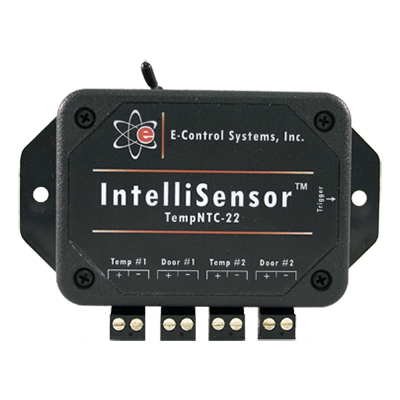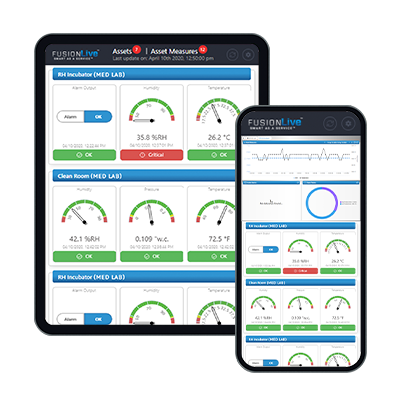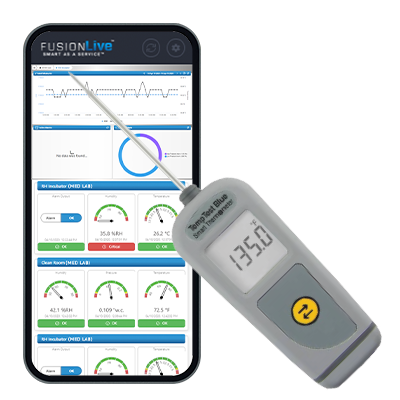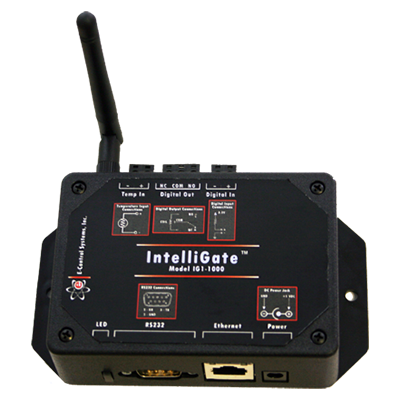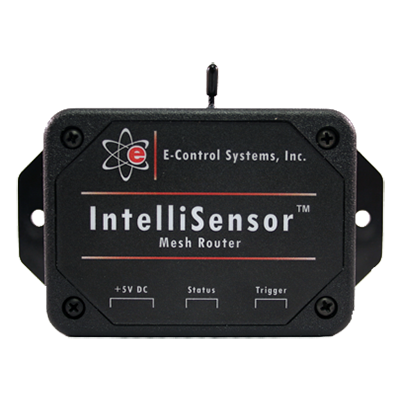E-Control Systems offers the most innovative wireless monitoring solution technology in the industry.
E-Control Systems Technologies
Our Patent-Pending IntelliSense™ Family of products is a low cost, feature rich line of hardware and software, used to wirelessly monitor an assortment of sensor types. The sensor data is measured by a battery powered IntelliSensor™ (which can accommodate up to 4 inputs) and transmitted wirelessly. E-Control Systems offers two different wireless solutions, operating either on the industry standard ZigBee™ protocol, Wi-Fi standard, or a combination of both.
The ZigBee™ sensors operate on the 802.15.4 ZigBee® protocol. These sensors communicate with the gateway. If a gateway is not in range, then the sensors will find a mesh router to relay the information to, at which point it becomes the mesh router’s responsibility to find a gateway (or another router) to send the sensor’s data to.
The Wi-Fi sensors operate on the 802.11 b/g Wi-Fi standard. These sensors transmit data through the facility’s Wi-Fi infrastructure to our FusionLive™ software, allowing for an easy creation of a centrally managed monitoring application, while keeping costs low.
Our Patent-Pending FusionLive™ software is an enterprise, web-hosted or on site solution, which communicates and manages IntelliSense™ and IntelliCheck™ devices. The intelligent software provides a complete asset management solution with one platform that works with all of E-Control Systems’ sensors. In addition, FusionLive™ software keeps reports and sends alerts, as well as tracks services and preventative maintenance. All critical data is stored securely in the cloud and may be viewed in real-time, via any web browser or our revolutionary app on any Apple iOS or Android device.
Our revolutionary FusionLive™ mobile app for Apple iOS and Android devices provides customers with a complete snapshot of the entire operation’s status. By using their mobile devices, customers can view alarms, status, and take corrective actions remotely.
The IntelliCheck™ family of products uses the latest in wireless technology. It is a complete HACCP inspection system designed to automate food temperature data logging and eliminate cumbersome form-based solutions. The IntelliCheck system works with all Apple iOS devices and communicates with E-Control Systems’ FusionLive™ software. With our patent pending IntelliCheck™ technology, corrective actions and other preventative maintenace may be taken directly from your iOS device.
Wireless Temperature Monitoring Systems API
Application Programing Interface (API) is a set of routines, protocols and tools for building software applications. An API is a software-to-software interface. APIs allow applications to communicate with each other without the end user even realizing that there were separate applications communicating. The end user only sees the one interface and doesn’t even know when one application sends information to another application.
Developing a good API is an important service to customers. It opens up the system to work in conjunction with a company’s software infrastructure, instead of separate and apart from it. Having an API is also a good way to support unanticipated future uses.
Many big social networking corporations have a developer section on their website, where they list instructions for using their APIs. To view what kind of information large companies provide developers for using their APIs, see the examples below:
- Facebook (http://developers.facebook.com/)
- Google Maps (https://developers.google.com/maps/)
E-Control Systems has released its FusionLive™ External Framework API, which was designed with customers in mind. All components were written using standards-based Web-API and XML, making integration easy. With only limited resources, a developer can create a meaningful application in a matter of 2 hours. The API also comes with a sample application showing how to use some of the most common features.
The integration of the FusionLive™ database to enterprise facility management systems, such as building automation, energy management, HVAC controls, and maintenance/preventative maintenance systems, provides an all-in-one system. This integrated system can provide alarms and reports in real time to improve the efficiency of the operations and save a tremendous amount of time and money, without having to invest in a new platform.
E-Control Systems Features
What makes E-Control Systems stand out? Our sensors and intelligates can monitor any aspect business 24/7.

